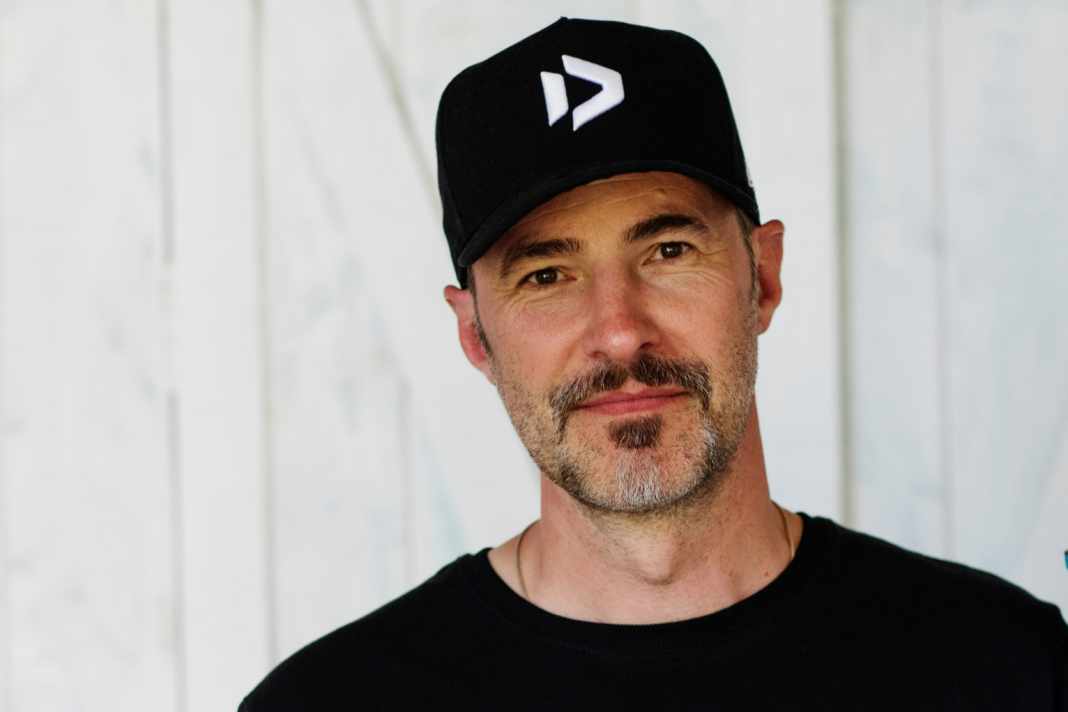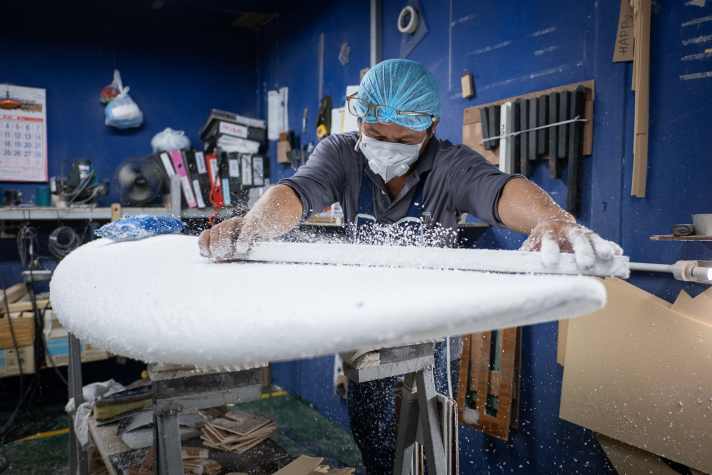





Almost all windsurf boards on the market are built by the Thai manufacturer Cobra, but not all brands are satisfied with the quality and transparency of the quasi-monopolist. Manufacturer Duotone switched to the new producer for certain models, for example the noble E/LAB constructions HCT. Brand manager Raoul Joa and shaper Dani Aeberli reveal what they hope to achieve in a surf interview.
Raoul, Dani, you now offer models like the Freerider Blast or also offers the wave models Grip 3 and Grip 4 partly in a design called E/LAB. What is the idea behind this?
Raoul: We call E/LAB a construction method that offers the best possible quality on the market. This is on a par with the boards offered by established custom-made manufacturers.
The models are only made to order. Why?
Raoul: Some E/LAB models are also currently available in advance, but the outlook for 2026 is that only what is ordered will be produced. Sales figures throughout the industry are no longer at the level of the boom times. There are certain fringe models, such as small waveboard sizes or certain board sizes from the slalom or freestyle sectors, which simply enable very low quantities. Nevertheless, we want to continue to offer such models, but it doesn't make economic sense to have them pre-produced and then sometimes sit on them. That's why our "made to order" model is something that we will be expanding in the future. You pre-order a board and get it delivered after an agreed time.
Normally, one per cent requires fixed order quantities and a guaranteed sales volume. How can this work at all for a producer like Cobra if boards are only made to order?
Dani: Only very difficult. The boards are therefore built in a different factory. We have now worked with HCT We have found a new producer that offers us completely new possibilities. Every process can be viewed there, from the procurement costs of the material to the end product, everything is traceable.



In the past, brands have repeatedly tried to establish alternatives to Cobra. In the end, the problem was often a lack of quality, which meant that the brands lost credit with end customers and had to grudgingly return to Cobra. Isn't switching to a new manufacturer in such a highly technical field a big risk?
Dani: The people at HCT, who own the factory, have worked for ten years in an existing production facility in Thailand or as shapers for other brands - there is a great deal of expertise there. All the key positions - CNC milling, the vacuum process, quality assurance and so on - are staffed without exception by people with years of expertise. The factory has been around since 2017 and I have been having my prototypes built there for personal use for many years because I have known the people personally for a long time. The capacity is now large enough to build the quantities we need, with around 80 people working there. So the move made sense for us. We can now monitor production closely and influence every step of the process. For example, we can use the carbon offcuts from the E/LAB boards, which would otherwise have been thrown away, as additional reinforcements in the stance or heel area for the cheaper versions. This makes the boards more stable and reduces waste - without costing extra. Our standard construction method, known as SLS, is also of a much higher quality than it used to be.
Video: How the boards are made in the HCT factory
Will only the E/LAB boards be built in the new production facility? Or also the other construction methods?
Dani: We started with the E/LAB boards there, but are gradually moving other models to HCT in 2025.
Custom brands like Flikka have become a serious competitor, especially in the wave sector. Is that another reason for you to build custom boards?
Dani: People want good quality, but there's nothing worse than buying a pig in a poke. What good is a high-quality board if you don't know exactly how it will ride on the water? So the idea is to offer our standard shapes, which have been developed and proven over the years and have also performed well in tests like yours, in custom-made quality. This is also a factor when it comes to reselling: what's the point in buying a second-hand board if you know that it has rocker number four, outline number two and the favourite underwater boat of this or that professional? That's the famous pig in a poke.
Raoul: The E/LAB construction method is the best of both worlds, so to speak: Tested series shapes with the quality of custom-made boards. And if customers know that they are getting the best quality and can resell the board for a good price after some time, many are willing to invest.

Back to the E/LAB boards for a moment. What characterises the design?
Dani: We use the best materials available. There are also additional reinforcements in the areas with the heaviest loads. But the production process at HCT also offers us new possibilities: E/LAB boards, for example, are manufactured using "table lamination". This is nothing new and has been done by established custom-made manufacturers for some time. As HCT can offer us this at a reasonable price, we have now implemented it for all boards. The deck fabric is impregnated with epoxy on a table before being placed on the board and the excess resin is wiped off again. This ensures that the fabric is impregnated with the perfect amount of resin before it is placed on the board. This means that no excess resin gets into the board, which alone saves around 200 grams of weight. In addition, the CNC milling of the EPS cores means that we no longer have any moulding costs. Until now, the moulds were the reason why the models had to run for a few years to make it worthwhile when the number of units was falling. Now we can make adjustments more quickly again if we see a need. This means that we can now change models as soon as we have a prototype that offers better performance.
Nobody wants to buy a pig in a poke. That's why we offer custom-made quality and tested shapes in combination
Aren't the unit prices automatically higher for a smaller producer like HCT? As a major player, Cobra has always had a decisive advantage here.
RaoulWe always start with the aim of building the best product and then we try to optimise the processes to keep the price at a reasonable level. Depending on the model, a board takes 30 to 40 hours of labour, which has long been a major cost factor in countries such as Thailand. The bottom line is that the E/LAB models are currently just as high-quality as those from established custom-made brands, but slightly more expensive. On the other hand, we have the advantage of being able to supply series shapes that have been developed and tested over many years.

